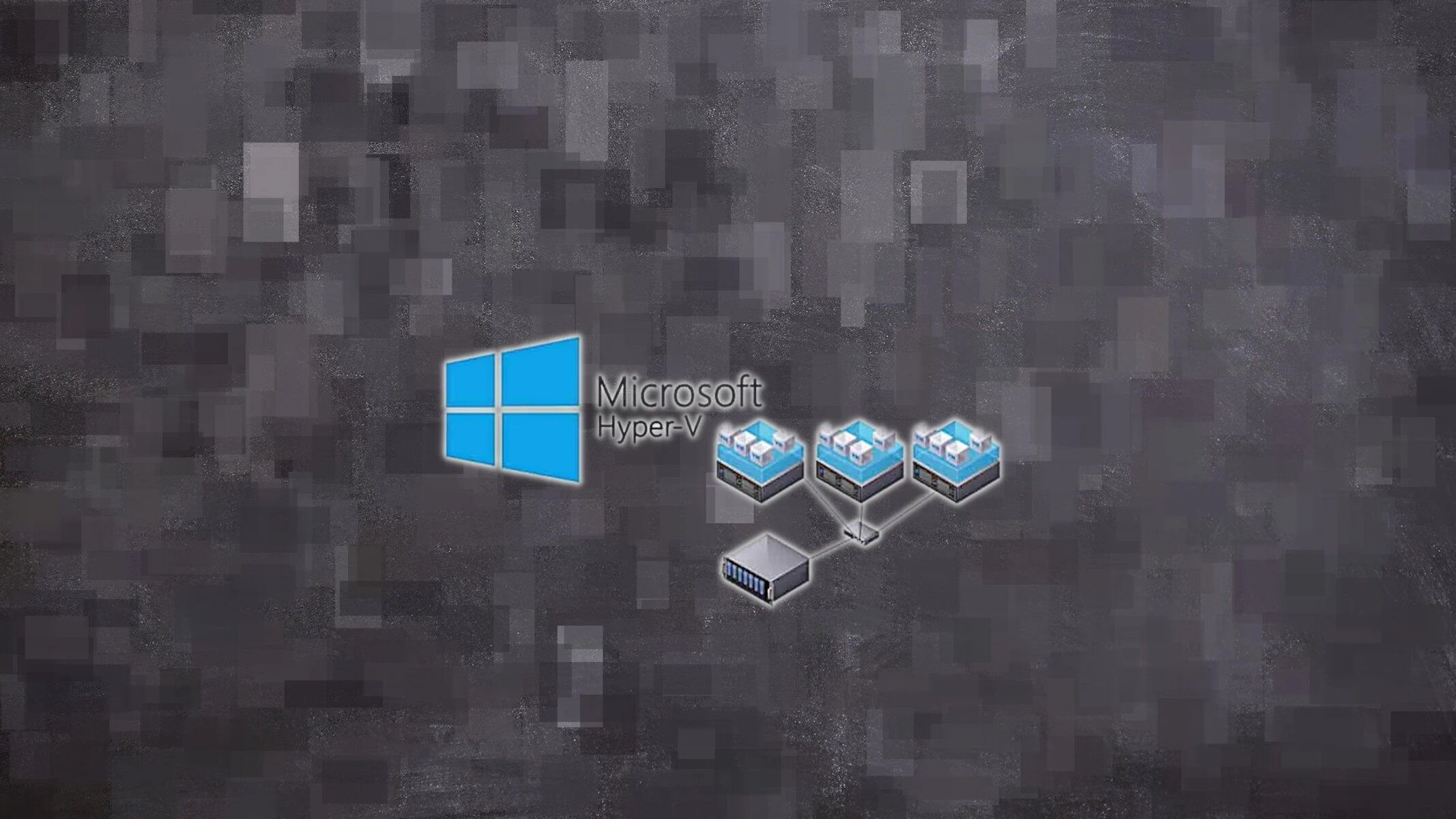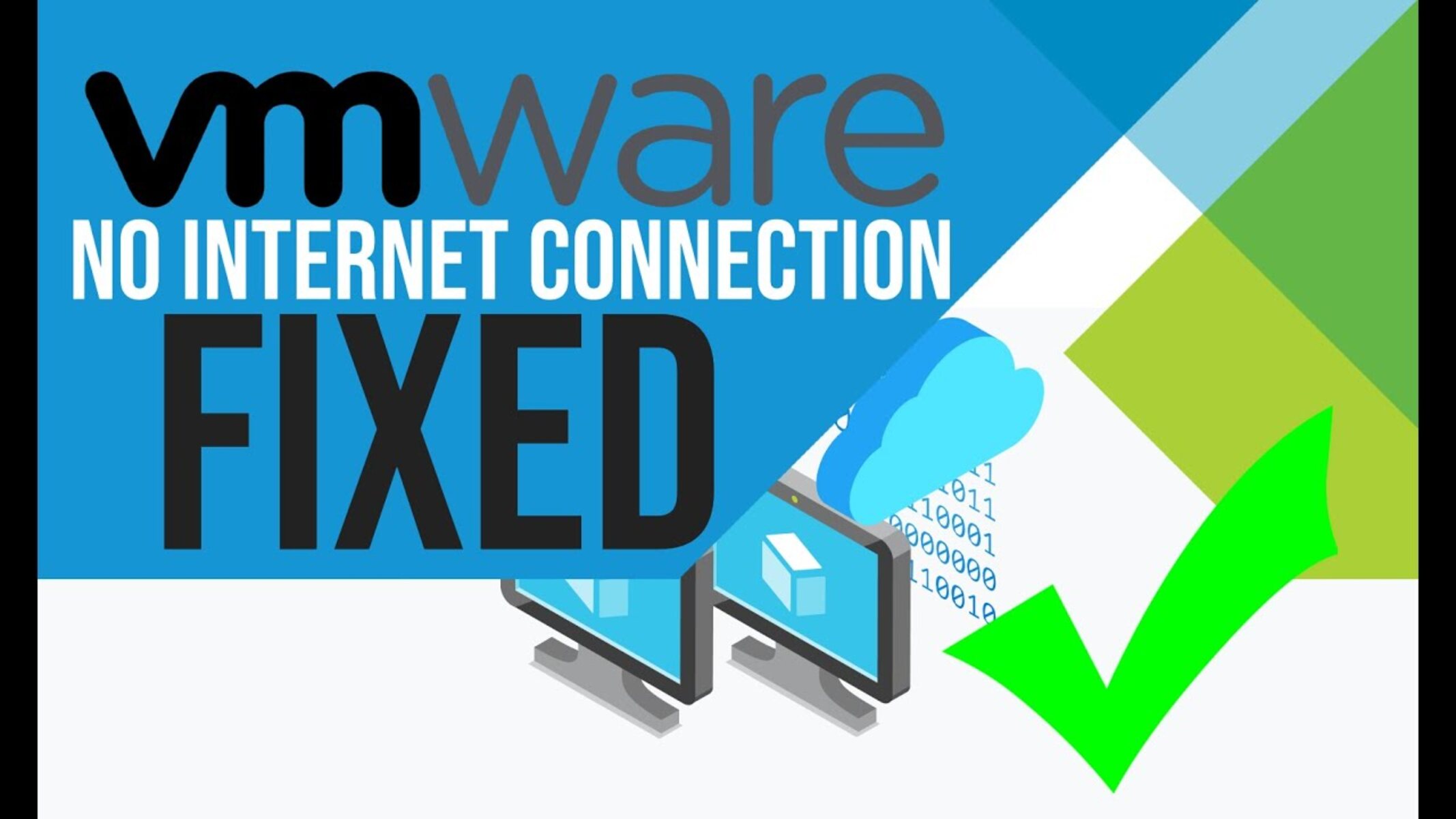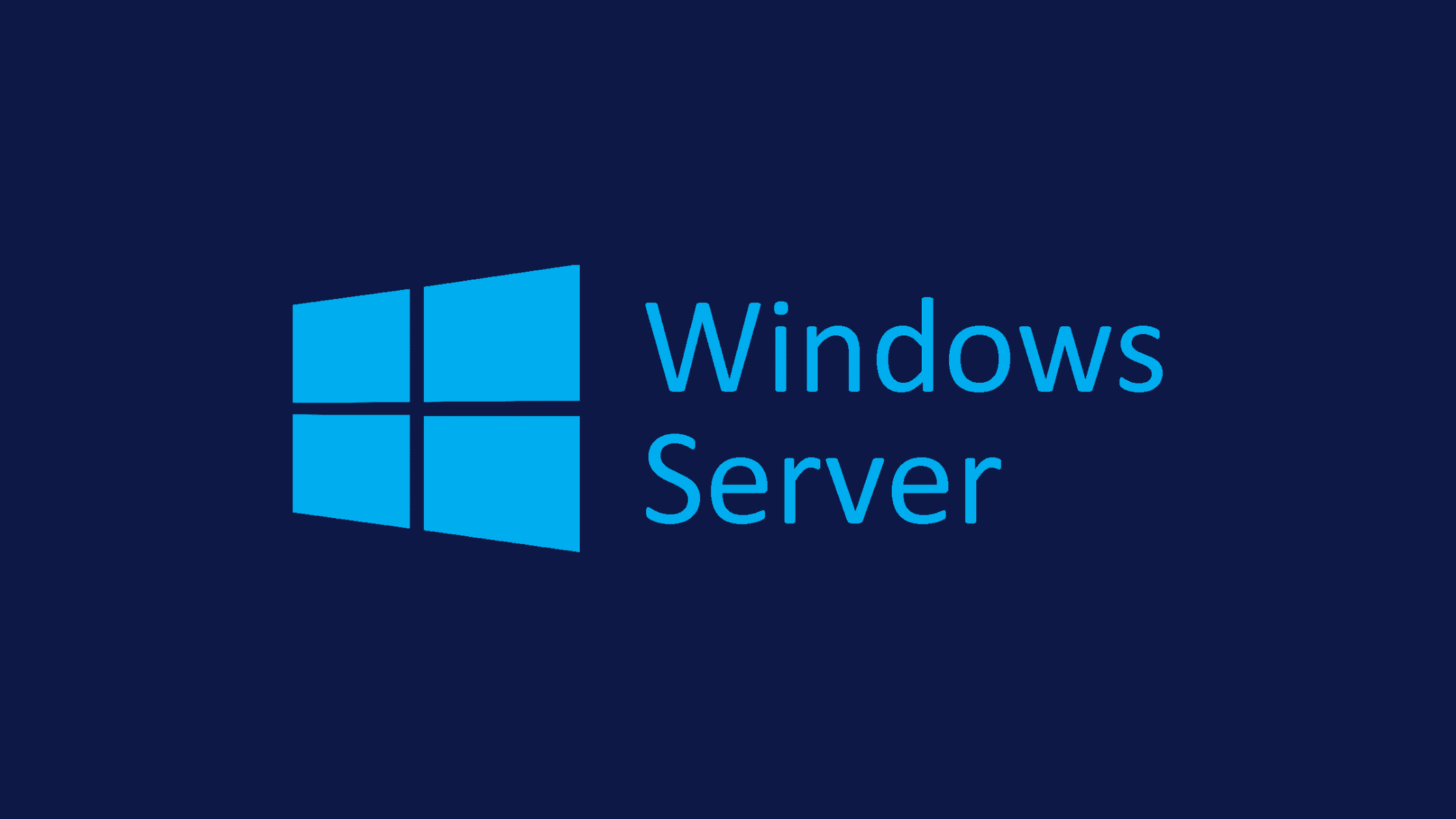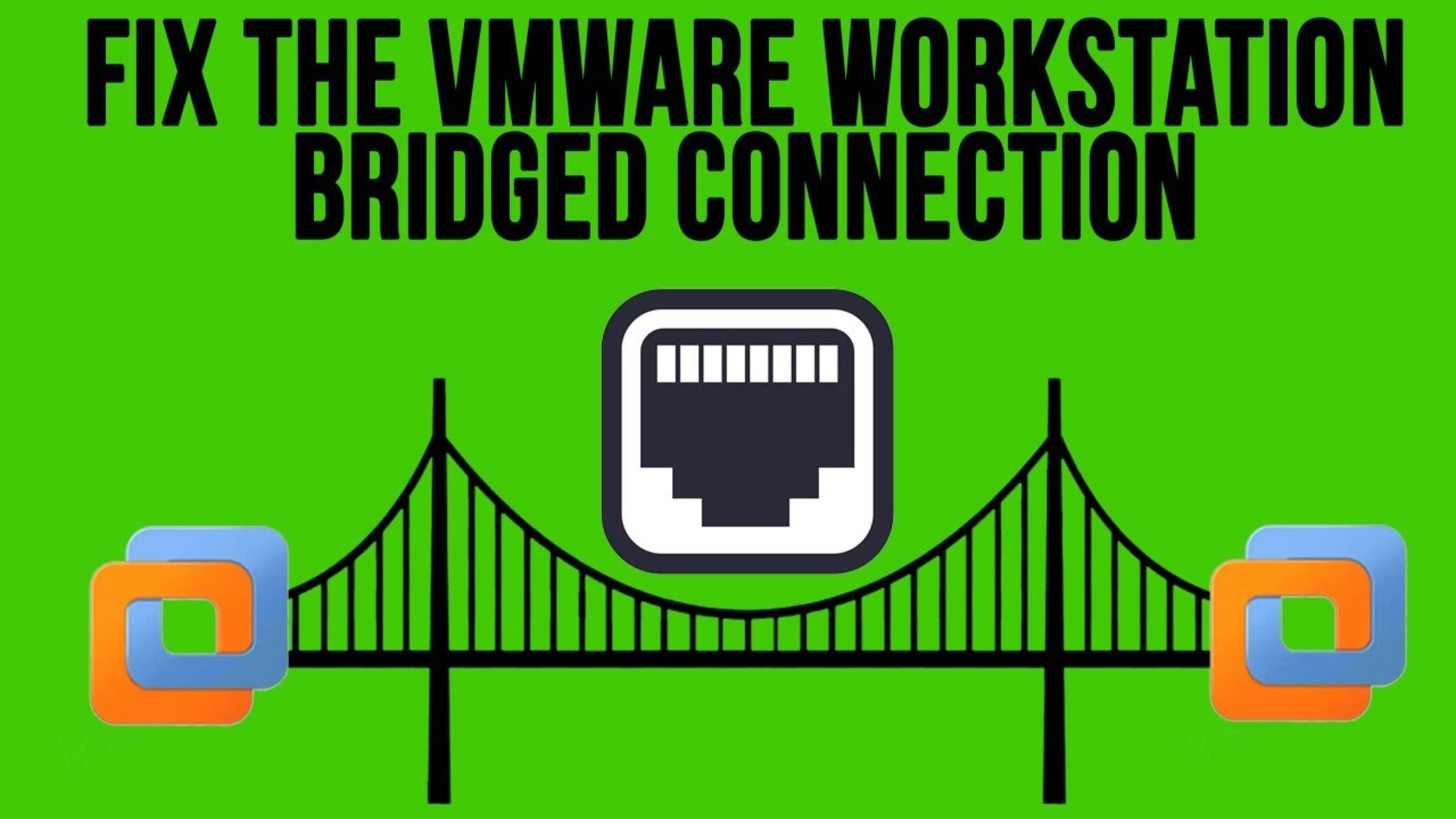Introduction
Setting up a server to work with VMware Workstation can greatly enhance your productivity and efficiency in handling virtualization. VMware Workstation is a powerful software that allows you to create and manage virtual machines on your server, providing you with a flexible and efficient means of running multiple operating systems concurrently.
Whether you’re a developer, IT professional, or a tech enthusiast, having a server configured with VMware Workstation can offer numerous benefits. It enables you to create isolated testing environments, deploy virtual machines for software development and testing purposes, and even simulate complex network infrastructures for training or troubleshooting.
In this guide, we will walk you through the step-by-step process of setting up a server to work with VMware Workstation. We will cover everything from downloading and installing VMware Workstation to configuring networking and enabling virtualization features on your server. By following these steps, you will be able to set up a robust and efficient virtualization environment that meets your specific needs.
Before we dive into the installation and configuration process, it’s important to note that setting up a server for VMware Workstation requires some prerequisite knowledge. Basic understanding of server hardware components, networking concepts, and operating system installations will be beneficial. Additionally, ensure that your server meets the minimum requirements and supports virtualization technologies, such as Intel VT-x or AMD-V, for optimal performance.
Now that we have provided you with the necessary introduction and prerequisites, let’s proceed to the first step: downloading and installing VMware Workstation on your server.
Prerequisites
Before you begin setting up a server to work with VMware Workstation, there are a few prerequisites that you should be aware of. These prerequisites ensure a smooth and successful installation and configuration process. Let’s take a look at the essential requirements:
- Server Hardware: Make sure your server meets the minimum system requirements to run VMware Workstation efficiently. Check the official VMware documentation for specific hardware requirements, such as processor, memory, and storage capacity.
- Supported Operating System: Ensure that your server is running a supported operating system. VMware Workstation is compatible with several operating systems, including Windows, Linux, and macOS. Check the VMware website for the latest compatibility information.
- Virtualization Support: Verify that your server’s CPU supports hardware virtualization technologies, such as Intel VT-x or AMD-V. These features enhance performance and allow the creation of 64-bit virtual machines. You may need to enable virtualization in the server’s BIOS settings.
- Network Connectivity: It’s essential to have a stable network connection on your server. This enables you to download VMware Workstation and updates, as well as access virtual machines remotely if needed. Ensure that your server is connected to a reliable network and has an assigned IP address.
- Software Updates and Patches: Keep your server’s operating system and firmware up to date with the latest patches and updates. This ensures compatibility with VMware Workstation and enhances security and stability.
It’s also recommended to have a backup strategy in place before proceeding with the server setup. Creating regular backups of your server’s data ensures that you can easily recover in case of any unforeseen issues during the installation and configuration process.
By ensuring that you meet these prerequisites, you’ll have a solid foundation for setting up a server to work with VMware Workstation. Now that we have covered the prerequisites, let’s move on to the next step: downloading and installing VMware Workstation on your server.
Step 1: Download and Install VMware Workstation
The first step in setting up a server to work with VMware Workstation is to download and install the software on your server. VMware Workstation is available for both Windows and Linux operating systems. Follow these steps to get started:
- Visit the official VMware website at www.vmware.com.
- Navigate to the Products section and locate VMware Workstation.
- Select the appropriate version of VMware Workstation for your operating system and click on the Download button.
- Once the download is complete, locate the installer file and run it.
- Follow the on-screen instructions to proceed with the installation. Review and accept the license agreement, choose the installation directory, and select any additional components you wish to install.
- When prompted, enter the license key or choose the option for a trial version if available. Provide the necessary contact information if required.
- Once the installation is finished, you can launch VMware Workstation from the Start menu (Windows) or applications menu (Linux).
During the installation process, VMware Workstation may prompt you to install device drivers or make changes to your system. It is recommended to allow these modifications for the software to function properly.
After successfully installing VMware Workstation on your server, it is essential to keep the software up to date. Regularly check for updates from the VMware website or configure automatic updates within the VMware Workstation settings.
Now that you have VMware Workstation installed on your server, you are ready to move on to the next step: preparing the server for virtualization.
Step 2: Prepare the Server
Before you can start utilizing the power of VMware Workstation on your server, it’s essential to prepare the server by ensuring that it meets the necessary requirements and settings. Follow these steps to prepare your server for virtualization with VMware Workstation:
- Verify Hardware Compatibility: Check that your server’s hardware is compatible with virtualization. Ensure that it has a CPU that supports hardware virtualization technologies such as Intel VT-x or AMD-V, and sufficient memory and storage capacity to accommodate the virtual machines you plan to create.
- Update Firmware and Drivers: It’s crucial to keep your server’s firmware and drivers up to date. Check the manufacturer’s website for any available updates. Updating firmware and drivers helps ensure compatibility and stability.
- Enable Virtualization in BIOS: Access your server’s BIOS settings during system startup. Look for an option related to virtualization (such as Intel Virtualization Technology or AMD Virtualization), and enable it if it is disabled. Save the changes and exit the BIOS.
- Check BIOS Settings: While in the BIOS, review and configure other relevant settings such as boot order, power management, and hardware monitoring. Ensure that the server is optimized for virtualization.
- Disable Unnecessary Features: Disable any unnecessary features or settings in the BIOS that may hinder virtualization performance or conflict with VMware Workstation. Examples include USB legacy support, onboard audio, and integrated graphics (if using a dedicated graphics card).
- Enable Hardware-assisted Virtualization: Depending on your server’s hardware, you may need to enable additional virtualization features, such as Intel VT-d (Direct I/O), for enhanced performance and device compatibility. Consult your server’s documentation for specific instructions.
By following these steps, you’ll ensure that your server is optimized for virtualization and ready to deliver optimal performance with VMware Workstation. It’s crucial to familiarize yourself with your server’s BIOS settings and consult your server’s documentation if you encounter any difficulties.
Now that you have prepared your server for virtualization, you can proceed to the next step: configuring the server BIOS to ensure optimal performance with VMware Workstation.
Step 3: Configure the Server BIOS
Configuring the server BIOS is a crucial step in setting up a server to work with VMware Workstation. The BIOS settings directly impact the performance and compatibility of your virtualization environment. Follow these steps to configure your server’s BIOS for optimal performance with VMware Workstation:
- Access BIOS Settings: Restart your server and press the designated key (e.g., F2, Del, Esc) during startup to enter the BIOS settings. The specific key may vary depending on your server manufacturer. Refer to your server’s documentation for the correct key.
- Enable Hardware Virtualization: Look for an option related to virtualization support, such as “Virtualization Technology,” “Intel VT-x,” or “AMD-V.” Enable this option if it is disabled. This setting allows your server to take full advantage of hardware-assisted virtualization.
- Disable Hyper-Threading: If your server has hyper-threading support (simultaneous multithreading), you may want to consider disabling it for better performance. Hyper-threading can sometimes introduce performance overhead in virtualized environments.
- Configure Memory and Processor Settings: Optimize your server by configuring the memory and processor settings. Enable memory protection features like “Execute Disable Bit” (XD or NX) to enhance security. Adjust processor settings such as power management and turbo boost as per your requirements and workload.
- Adjust Power Management Settings: Consider adjusting power management settings to prevent the server from entering power-saving modes while running virtual machines. Set power profiles to “Performance” or “High-Performance” to ensure consistent performance.
- Save and Exit: Once you have made the necessary changes, save the settings and exit the BIOS. Confirm the changes when prompted.
It’s essential to note that the specific BIOS settings and options may vary depending on your server’s manufacturer and model. Consult your server’s documentation or manufacturer’s website for detailed instructions on configuring the BIOS for virtualization.
Configuring the server BIOS correctly ensures that your server is optimized for virtualization performance and compatibility. Now that you have configured the server BIOS, the next step is to install the operating system on the server to prepare for VMware Workstation.
Step 4: Install the Operating System on the Server
Installing the operating system is a crucial step in setting up a server to work with VMware Workstation. The operating system will serve as the foundation for running VMware Workstation and hosting virtual machines. Follow these steps to install the operating system on your server:
- Obtain the Operating System Installation Media: Ensure you have the installation media for the operating system you wish to install. This can be in the form of a CD/DVD or an ISO file.
- Boot from the Installation Media: Insert the installation media into your server’s appropriate drive. Restart the server and access the BIOS settings to set the boot order to prioritize the installation media. Save the changes and exit the BIOS. The server will then boot from the installation media.
- Follow the Installation Wizard: Once the server boots from the installation media, you will be guided through the installation process by the operating system’s installation wizard. Follow the prompts to select the language, region, and other required settings.
- Partition and Format the Hard Drive: When prompted, select the hard drive or partition where you want to install the operating system. You may need to create or modify partitions and format the drive according to your needs.
- Provide Necessary Information: During the installation process, you may be asked to provide details such as usernames, passwords, and network settings. Make sure to provide accurate information for smooth operation.
- Complete the Installation: Once you have provided all the necessary information, the installation process will commence. It will take some time to complete, and the server may reboot several times. Follow any additional prompts or instructions provided by the operating system installation wizard.
- Finalize the Setup: After the installation is complete, the server will reboot into the newly installed operating system. Follow any remaining setup steps, such as configuring network settings, updating the operating system, and installing necessary drivers and software.
Once you have successfully installed the operating system on your server, it will be ready to run VMware Workstation and host virtual machines. Ensure that you keep the operating system up to date with the latest patches and updates for optimal security and performance.
With the operating system installed, you can now proceed to the next step: configuring networking on the server to enable connectivity for your virtual machines.
Step 5: Configure Networking on the Server
Configuring networking on the server is an important step in setting up a server to work with VMware Workstation. Proper network configuration allows your virtual machines to communicate with the host server and other network devices. Follow these steps to configure networking on your server:
- Identify Network Requirements: Determine the network requirements for your virtual machines. Decide whether you need the virtual machines to have access to the internet, communicate with other machines on the local network, or have a dedicated network for specific purposes.
- Assign IP Addressing: Decide how IP addresses will be assigned to your virtual machines. You can choose to use either dynamic IP addressing (DHCP) or static IP addressing. Ensure that you have a plan in place to prevent IP address conflicts.
- Configure Network Adapters: Access the network adapter settings on your server. Configure the network adapter(s) to match the desired network requirements. This may involve setting the adapter to bridged mode, NAT (Network Address Translation) mode, or host-only mode.
- Set Up Virtual Networks: VMware Workstation allows you to create virtual networks for your virtual machines. Virtual networks can be used to simulate different network environments and isolate virtual machines. Set up virtual networks according to your requirements.
- Configure Firewall and Security: If you have a firewall installed on your server, ensure that it is configured to allow necessary network traffic to and from the virtual machines. Implement any required security measures, such as port forwarding, network segmentation, or virtual private networks (VPNs).
- Test Network Connectivity: After configuring the network settings, verify that the server and virtual machines can communicate with each other and with other devices on the network. Test network connectivity by pinging IP addresses, accessing shared resources, or performing other network-dependent tasks.
Properly configuring networking on your server ensures that your virtual machines have seamless connectivity and can function as desired. It allows them to access the internet, communicate with other machines, and participate in network services just like physical machines.
With networking successfully configured on the server, you can proceed to the next step: enabling virtualization features on the server to enhance the performance of your virtual machines.
Step 6: Enable Virtualization Features on the Server
Enabling virtualization features on your server is a crucial step to unlock the full potential of VMware Workstation and ensure optimal performance of your virtual machines. Virtualization features leverage hardware capabilities to enhance virtualization performance. Follow these steps to enable virtualization features on your server:
- Access the BIOS: Restart your server and enter the BIOS settings by pressing the designated key (e.g., F2, Del, Esc) during startup. Refer to your server’s documentation for the correct key.
- Locate Virtualization Settings: Look for settings related to virtualization support, such as “Virtualization Technology,” “Intel VT-x,” or “AMD-V.” Enable these options if they are disabled. These settings allow your server to take full advantage of hardware-assisted virtualization.
- Enable Nested Virtualization: If you plan to run virtual machines within virtual machines (known as nested virtualization), check if your server’s hardware and BIOS support nested virtualization. If supported, enable the necessary settings for nested virtualization in the BIOS.
- Save and Exit: Once you have made the necessary changes, save the BIOS settings and exit. Confirm the changes if prompted.
Enabling virtualization features in the BIOS allows your server to efficiently utilize hardware resources and deliver optimal performance for virtual machines. It ensures that virtualization instructions are directly carried out by the CPU, speeding up virtual machine operations and reducing overhead.
After enabling virtualization features in the BIOS, it’s recommended to reboot the server to apply the changes. Confirm that the changes are in effect by checking the system information or the BIOS settings after the reboot.
Now that you have enabled virtualization features on your server, it’s time to install VMware Tools on the server to enhance the functionality and performance of your virtual machines. This will be covered in the next step.
Step 7: Install VMware Tools on the Server
Installing VMware Tools on your server is an important step in the setup process as it enhances the functionality and performance of your virtual machines. VMware Tools provides drivers and utilities that optimize the guest operating system’s interaction with the host server. Follow these steps to install VMware Tools on your server:
- Launch VMware Workstation: Start VMware Workstation on your server if it is not already running.
- Select the Desired Virtual Machine: In the VMware Workstation interface, locate and select the virtual machine for which you want to install VMware Tools.
- Mount the VMware Tools ISO: From the VMware Workstation menu, go to VM > Install VMware Tools. This action mounts the VMware Tools ISO file to the virtual machine’s CD/DVD drive.
- Install VMware Tools: Within the virtual machine, navigate to the mounted VMware Tools ISO (typically represented as a virtual CD/DVD drive) and run the appropriate installer file for your guest operating system. Follow the on-screen instructions to proceed with the installation.
- Complete the Installation: Once the installation is complete, restart the virtual machine to ensure that VMware Tools is fully functional. After the restart, VMware Tools will be active and integrated with the guest operating system.
- Verify VMware Tools Functionality: To confirm that VMware Tools is installed and working properly, check for the VMware Tools icon in the guest operating system’s system tray or menu bar. You can also verify the functionality by observing improved mouse performance, seamless mouse movement between the host and guest, and enhanced graphics performance.
Installing VMware Tools on your server enables essential features such as time synchronization, improved graphics performance, shared folders, and seamless mouse integration between the host and guest operating systems. These features greatly enhance the usability and performance of your virtual machines.
Remember to repeat the installation process for each virtual machine on your server to ensure that the benefits of VMware Tools are extended to all your virtualized environments.
With VMware Tools successfully installed, you’re one step closer to creating and managing virtual machines on your server. The next step is to configure the virtual machines on VMware Workstation to meet your specific requirements.
Step 8: Configure Virtual Machines on VMware Workstation
Configuring virtual machines on VMware Workstation is the final step in setting up a server to work with VMware Workstation. This step involves creating, customizing, and managing virtual machines to meet your specific requirements. Follow these steps to configure virtual machines on VMware Workstation:
- Create a New Virtual Machine: In the VMware Workstation interface, click on the “Create a New Virtual Machine” option. This will launch the New Virtual Machine Wizard to guide you through the process.
- Select a Guest Operating System: Choose the appropriate guest operating system that you want to install on the virtual machine. This should align with the operating system you intend to use for specific applications or development purposes.
- Specify Virtual Machine Configuration: Set the desired configuration options for the virtual machine, such as the allocated memory, virtual hard disk size, network adapters, and other hardware settings. You can also choose to customize the virtual machine’s advanced settings if required.
- Install the Guest Operating System: Follow the prompts to install the guest operating system on the virtual machine. This typically involves selecting the installation media (ISO file or physical disk) and configuring the necessary installation settings.
- Install Additional Software: Once the guest operating system is installed, you can proceed to install any additional software or applications required for your specific use case or workload.
- Configure Networking: Set up the network configuration for the virtual machine. This includes assigning an IP address, configuring network adapters, and connecting the virtual machine to the appropriate virtual network or external network.
- Customize Virtual Machine Settings: Use the VMware Workstation interface to further customize the virtual machine’s settings, such as adjusting the number of CPUs, increasing memory allocation, adding virtual devices, or enabling features like shared folders or drag-and-drop functionality.
- Save and Power On: After finalizing the virtual machine configuration, save the settings and power on the virtual machine. You can now start using the virtual machine as a fully functional and isolated environment for your specific needs.
By properly configuring virtual machines on VMware Workstation, you can create multiple isolated environments to run different operating systems, test software applications, or simulate network setups for troubleshooting purposes. This flexibility allows you to streamline your workflow, efficiently manage resources, and increase overall productivity.
Remember to regularly update and maintain your virtual machines to ensure security, performance, and compatibility with the latest software updates and patches.
Congratulations! You have successfully completed the steps to set up a server to work with VMware Workstation. Enjoy the benefits of virtualization and explore the various possibilities that VMware Workstation offers for your work or personal projects.
Conclusion
Setting up a server to work with VMware Workstation opens up a world of possibilities for virtualization. By following the step-by-step guide provided in this article, you have learned how to download and install VMware Workstation, prepare the server, configure the server BIOS, install the operating system, configure networking, enable virtualization features, install VMware Tools, and configure virtual machines.
With VMware Workstation, you can create and manage virtual machines on your server, enabling you to run multiple operating systems concurrently, simulate complex network environments, and facilitate software development and testing. Virtualization offers increased flexibility, efficiency, and resource optimization in your work or personal projects.
Remember to check the prerequisites before starting the setup process. Ensure that your server meets the hardware requirements, runs a supported operating system, has virtualization support, and is connected to a stable network. Keeping your server’s firmware and drivers up to date is also crucial for compatibility and stability.
Properly configuring the server BIOS, enabling virtualization features, and installing VMware Tools are critical steps to maximize virtualization performance and functionality. Configuring virtual machines on VMware Workstation allows you to tailor your virtual environments to suit your specific needs and workloads.
Throughout the setup process, it’s essential to consult your server’s documentation and manufacturer’s guidelines to ensure accurate and optimized configuration. Regularly updating your virtual machines and server with the latest patches and security updates is important for maintaining system integrity.
Now that you have successfully set up a server to work with VMware Workstation, it’s time to explore the vast possibilities that virtualization offers. Embrace the flexibility, efficiency, and convenience of running multiple operating systems on a single server, and enjoy the benefits of virtualization in your daily work or personal projects.

























